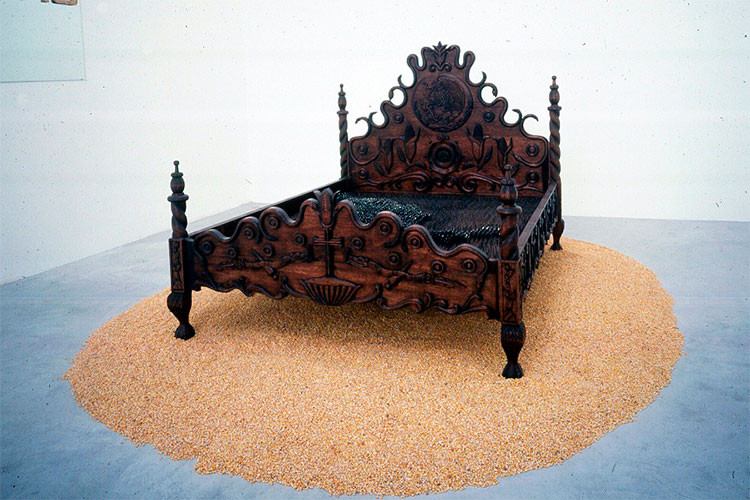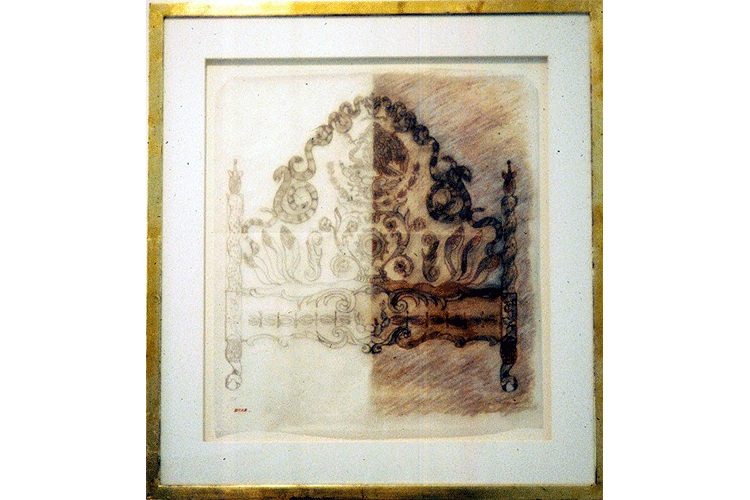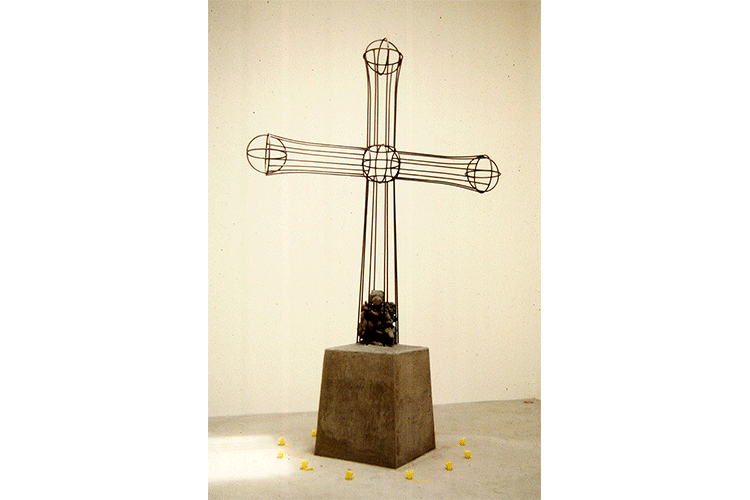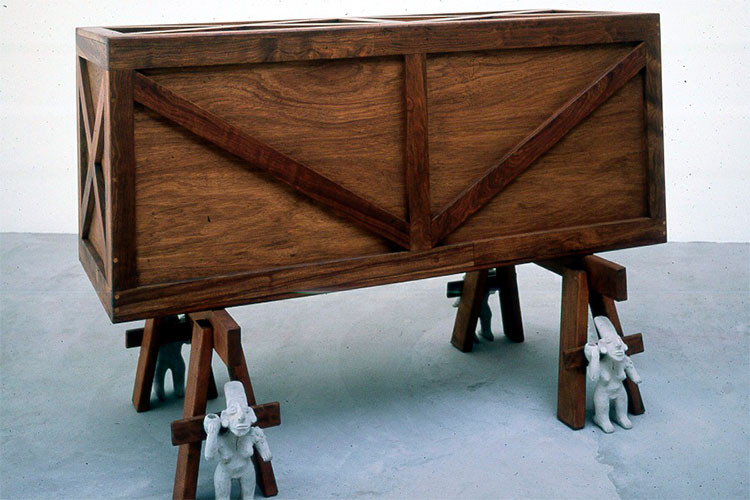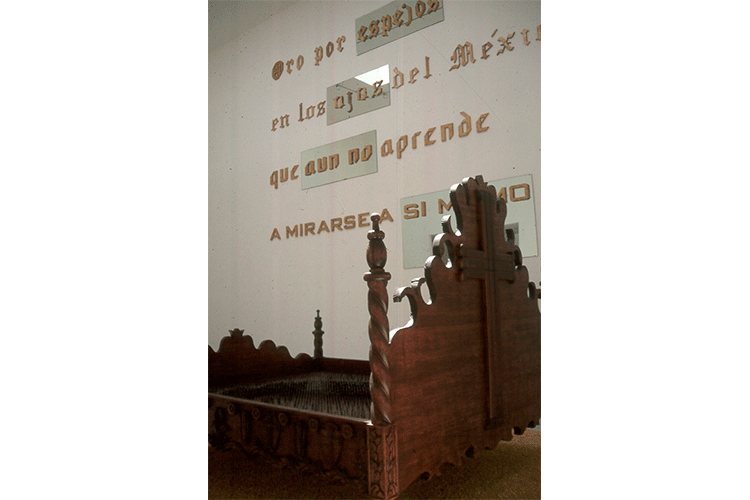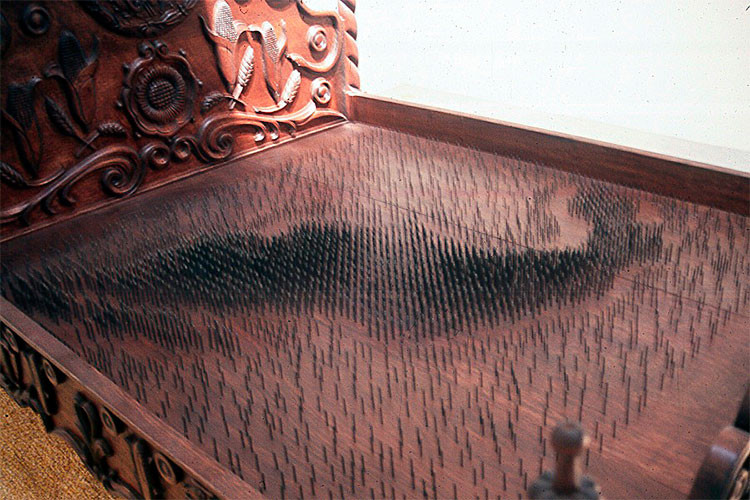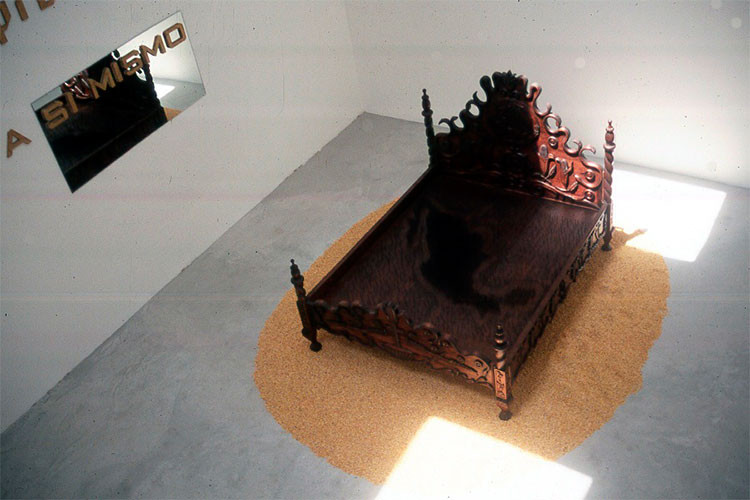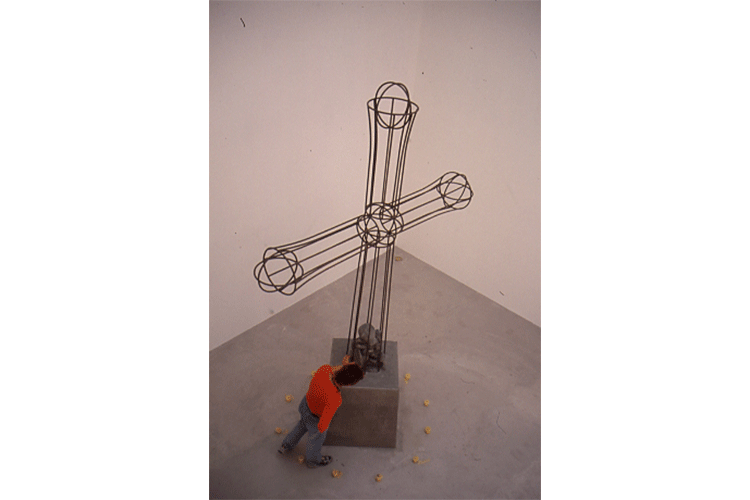Gold for mirrors
The title of the exhibition automatically evokes the first formal exchange between the Spanish and the indigenous Mesoamerica. The Indians were “cheated” for the first time, when they exchanged their gold for the Spaniards mirrors.
The Presidential Bed. The artist constructed this mahogany bed in a style reminiscent of the colonial period and hired traditional artisans to carve the Mexican and Spanish motifs that adorn it. Two thousand iron nails simulate a mattress in the shape of a topographic map of Mexico. The bed sits upon an oval carpet of corn. A vertical reading of the sculpture moving from the bottom to the top, refers to three eras of Mexican history, the corn representing pre-Hispanic civilizations, the carved symbols the Spanish conquest over indigenous peoples, and the nails to the present time. The work was made at the time of an important election and suggests the challenges and careful balancing act faced by any president.
The Presidential Chair. Is a version of the Mexican presidential chair, but instead of the cushioned seat, there is a toilet mounted on a circle formed with Mexican land.
The three México’s. An iron cross partially covered by a cement base from where statuettes in the form of pre-Columbian iconography emerge. The metal cross serves as foundation for a modernist pillar that begins to cover the statuettes, and the cross itself creating a new history.
Gold for mirrors. Wooden text covered with a gold leaf, and chronologically arranged initiating the sentence with the oldest typography, on to the most modern. The text is installed on the wall over rectangular mirrors, forcing viewers to look at themselves while they read. The piece reads: “Gold for mirrors in the eyes of a Mexico that has yet to learn to look at itself.”
Caoba/Chechan. Using mahogany and chechén wood from southeast Mexico, ERRE crafted a box that resembles both a treasure chest and shipping crate. The box is mounted on sawhorses which are also made from valuable tropical wood. Next to each leg of this base stands a small cement figurine which functions as a guardian, recalling Aztec deities. The work alludes to the mythic Aztec treasure stolen by Cortes and his conquistadors. The box is empty, however, suggesting that the natural resources like the wood the box is made from were the true treasures purloined by the Spanish.
The Presidential Bed. The artist constructed this mahogany bed in a style reminiscent of the colonial period and hired traditional artisans to carve the Mexican and Spanish motifs that adorn it. Two thousand iron nails simulate a mattress in the shape of a topographic map of Mexico. The bed sits upon an oval carpet of corn. A vertical reading of the sculpture moving from the bottom to the top, refers to three eras of Mexican history, the corn representing pre-Hispanic civilizations, the carved symbols the Spanish conquest over indigenous peoples, and the nails to the present time. The work was made at the time of an important election and suggests the challenges and careful balancing act faced by any president.
The Presidential Chair. Is a version of the Mexican presidential chair, but instead of the cushioned seat, there is a toilet mounted on a circle formed with Mexican land.
The three México’s. An iron cross partially covered by a cement base from where statuettes in the form of pre-Columbian iconography emerge. The metal cross serves as foundation for a modernist pillar that begins to cover the statuettes, and the cross itself creating a new history.
Gold for mirrors. Wooden text covered with a gold leaf, and chronologically arranged initiating the sentence with the oldest typography, on to the most modern. The text is installed on the wall over rectangular mirrors, forcing viewers to look at themselves while they read. The piece reads: “Gold for mirrors in the eyes of a Mexico that has yet to learn to look at itself.”
Caoba/Chechan. Using mahogany and chechén wood from southeast Mexico, ERRE crafted a box that resembles both a treasure chest and shipping crate. The box is mounted on sawhorses which are also made from valuable tropical wood. Next to each leg of this base stands a small cement figurine which functions as a guardian, recalling Aztec deities. The work alludes to the mythic Aztec treasure stolen by Cortes and his conquistadors. The box is empty, however, suggesting that the natural resources like the wood the box is made from were the true treasures purloined by the Spanish.
2000. Included on the THEM AND US/ ELLOS Y NOSOTROS exhibition, 2019.
